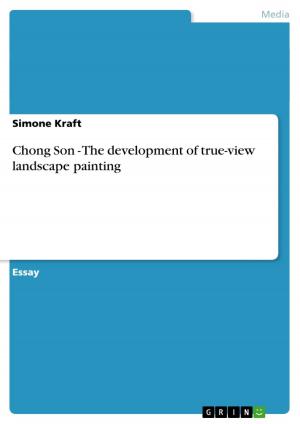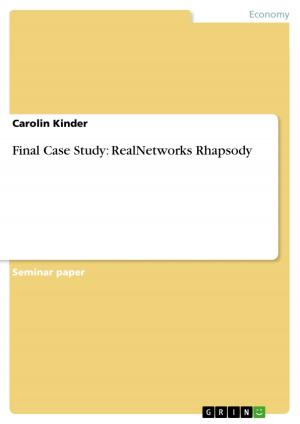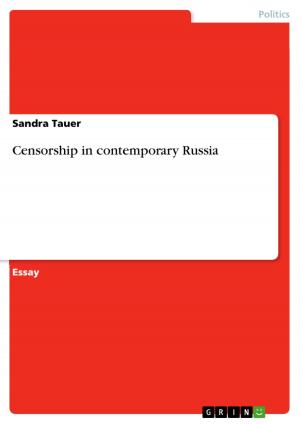Disney's creative contribution to US-American World War 2 propaganda and its effect on the citizens' attitude towards war
Nonfiction, Entertainment, Performing Arts, Film| Author: | David Hesse | ISBN: | 9783656637554 |
| Publisher: | GRIN Publishing | Publication: | April 14, 2014 |
| Imprint: | GRIN Publishing | Language: | English |
| Author: | David Hesse |
| ISBN: | 9783656637554 |
| Publisher: | GRIN Publishing |
| Publication: | April 14, 2014 |
| Imprint: | GRIN Publishing |
| Language: | English |
Pre-University Paper from the year 2014 in the subject Communications - Movies and Television, grade: 1+, , language: English, abstract: When I was to decide for a topic to be dealt with in my 'Facharbeit', the decision was clear: Including my interest in the history and pop culture of the United States of America, Disney's World War 2 cartoons offer a great potential to be researched intensively as one can find a lot of background knowledge, regarding the history of the Disney studios and the general historical context. Also, there is a broad mass of cartoons to be analyzed and looked at closely. Questioning the justification for family cartoons to be used as propaganda material, I further have a firm opinion. However, in order not to go beyond the scope, I must, unfortunately, leave out several relevant and interesting aspects to the topic and do not make any claims for completeness. In the following, I would like to elucidate my approach towards the issue: To begin with, I focus on general, historical facts about the US-American World War 2 propaganda and Disney's contribution to the war effort, giving basic background information, in order to understand and interpret two war-time cartoons which perfectly exemplify the convincing way most propaganda cartoons worked and appealed to the citizens. Being two of the most popular shorts during World War 2 (one of them even honored with an Oscar) and rather focusing on entertainment, instead of war instructions, both Der Fuehrer's Face and Reason and Emotion are great fun to watch and very suitable for a detailed interpretation. Eventually, I comment on the general justification of those cartoons and sum up my results.
Pre-University Paper from the year 2014 in the subject Communications - Movies and Television, grade: 1+, , language: English, abstract: When I was to decide for a topic to be dealt with in my 'Facharbeit', the decision was clear: Including my interest in the history and pop culture of the United States of America, Disney's World War 2 cartoons offer a great potential to be researched intensively as one can find a lot of background knowledge, regarding the history of the Disney studios and the general historical context. Also, there is a broad mass of cartoons to be analyzed and looked at closely. Questioning the justification for family cartoons to be used as propaganda material, I further have a firm opinion. However, in order not to go beyond the scope, I must, unfortunately, leave out several relevant and interesting aspects to the topic and do not make any claims for completeness. In the following, I would like to elucidate my approach towards the issue: To begin with, I focus on general, historical facts about the US-American World War 2 propaganda and Disney's contribution to the war effort, giving basic background information, in order to understand and interpret two war-time cartoons which perfectly exemplify the convincing way most propaganda cartoons worked and appealed to the citizens. Being two of the most popular shorts during World War 2 (one of them even honored with an Oscar) and rather focusing on entertainment, instead of war instructions, both Der Fuehrer's Face and Reason and Emotion are great fun to watch and very suitable for a detailed interpretation. Eventually, I comment on the general justification of those cartoons and sum up my results.















